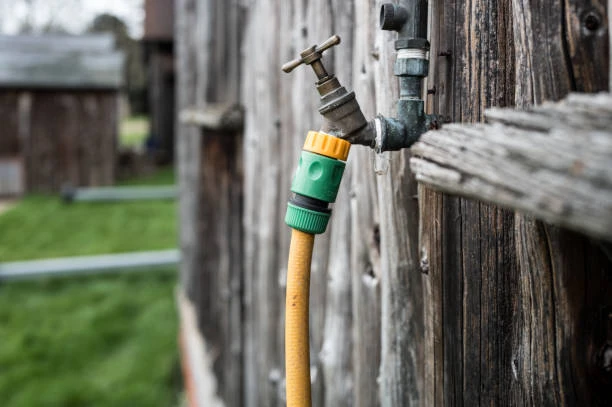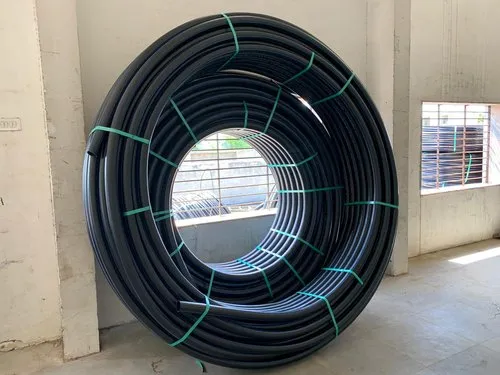In a recent incident in Wiltshire, a Water pipe has been severely damaged, causing significant disruptions to water supply in the region. Thames Water, the company responsible for managing the region’s water infrastructure, has attributed the damage to a “third party,” meaning an external entity or individual was responsible for the incident. The damage to the water pipe has raised concerns about the vulnerability of vital infrastructure to external factors and the responsibilities of various parties in maintaining the integrity of public utilities.
The Wiltshire Water Pipe Incident
The incident occurred in Wiltshire, where a critical water pipe supplying a large area with clean water suffered substantial damage. Thames Water confirmed that the damage was caused by a “third party,” but did not initially provide further details on the identity of the responsible party. This left many residents and local authorities in suspense, wondering whether the damage was accidental or the result of reckless behavior.
Impact on Water pipe Local Residents and Businesses
The damage to the water pipe caused severe disruption to water supply across the region. Many residents reported either low water pressure or complete loss of water service for several hours. The lack of a steady water supply not only caused inconvenience but also created public health concerns, especially for businesses, schools, and healthcare facilities reliant on water for day-to-day operations.
Thames Water immediately initiated an emergency response to restore the water supply, with teams working around the clock to repair the damage and bring water pressure back to normal. However, given the scale of the damage and the complexity of the repairs, it took several days to fully restore water services to affected areas.
What Is a ‘Third Party’ in Water pipe Infrastructure Incidents?
Thames Water has stated that a “third party” was responsible for damaging the water pipe, but what does this term actually mean? In the context of water infrastructure, a “third party” typically refers to an external party or entity that is not directly associated with the management or maintenance of the water system. This could include contractors, construction companies, individuals carrying out digging or landscaping work, or even vandals.
Damage caused by third parties is not an uncommon issue for water utilities. Excavation work, road repairs, and construction projects can inadvertently cause damage to underground pipes. In some cases, a lack of proper coordination or failure to mark the location of utilities can lead to accidental damage. This is particularly true in urban areas where multiple utilities are buried beneath the surface, including water, gas, and electricity lines.

How Did the Water pipe Damage Occur?
While the exact cause of the damage in Wiltshire has yet to be fully detaile, experts suggest that the damage likely occurred during construction or digging activities near the water pipe. These activities can easily disturb water infrastructure if not conducted carefully and with proper awareness of the locations of utilities. Contractors are generally require to contact utility companies before commencing any work that might interfere with existing pipes or cables to avoid damaging vital services.
In this case, the damaged water pipe was located underground, and it’s possible that the third party involved either struck the pipe accidentally or failed to adhere to safety protocols while working in the area. Once the pipe was damage, water from the mains began to leak, resulting in the disruption of service.
The Role of Thames Water pipe in Responding to the Incident
Thames Water is responsible for maintaining the water supply and the infrastructure that supports it in Wiltshire. Upon discovering the damage, the utility company immediately mobilized emergency response teams to assess the situation. The company’s engineers worked to locate the leak, assess the extent of the damage, and then begin the necessary repairs.
Thames Water also communicated regularly with residents through social media updates and customer service hotlines, informing them of the ongoing situation and estimated timelines for restoration of services. In such cases, communication is crucial to managing public expectations and providing transparency about the efforts being make to restore service.
Thames Water’s actions in swiftly responding to the damage helped minimize the disruption. The utility company has also indicated that it will investigate the circumstances that led to the damage and seek to address any underlying issues with the third-party party involved.
Preventing Future Damage to Water Pipes
The Wiltshire water pipe incident highlights a broader issue faced by water utilities: the vulnerability of infrastructure to external damage. Water pipes are critical to the functioning of communities, and when they are damage, it can cause not only inconvenience but also significant financial and environmental consequences. In the aftermath of this incident, Thames Water and other utilities will need to consider how to minimize the risk of third-party damage to water pipes and other critical infrastructure.
Improved Communication and Coordination with Contractors
One of the most effective ways to prevent accidental damage to water pipes is to ensure better communication between water utilities and contractors or construction firms working in the area. Utilities should provide clear and accurate maps of water pipe locations to all relevant parties, and contractors should always consult these maps before beginning any digging or excavation work.
Additionally, water utilities could implement a more rigorous system of notifications and permits for construction activities near water pipes. This could include requiring contractors to submit detailed plans of their work, which would be reviewe by the water utility to ensure that they are not inadvertently putting water pipes at risk.
Use of Advanced Detection Technologies
In some cases, new technologies like ground-penetrating radar (GPR) or pipe location sensors could help detect and map water pipes more accurately. By using advanced detection technologies, contractors can better understand the layout of underground utilities, reducing the risk of accidental damage during construction.
Water utilities could also invest in smart monitoring systems for their infrastructure. These systems can detect changes in water pressure or temperature and send alerts when a problem occurs, allowing utilities to respond more quickly to potential threats to the water supply. These technologies would be particularly useful in preventing issues related to leaks, as they can help pinpoint the location of damage more efficiently.
Public Awareness and Education
While the third party involved in this incident may have been a contractor, public awareness about the risks of damaging water pipes is also crucial. Thames Water and other utilities can work to educate the public about the importance of respecting utility lines and the dangers of tampering with infrastructure. Public outreach campaigns can help prevent future incidents, especially in rural areas where people may not be fully aware of the consequences of damaging a water pipe.
Legal Accountability for Third-Party Damage
Another critical step in preventing future damage to water pipes is holding third parties accountable for their actions. If a contractor or individual causes damage to a water pipe due to negligence, they should be hold legally responsible for the costs of repairs and any resulting service disruptions. Thames Water has stated that it will investigate the incident, which could lead to the identification and potential legal action against the responsible party.
The legal framework for ensuring accountability in these cases could also be improve. Clear guidelines and penalties for damaging critical infrastructure can serve as a deterrent to contractors or individuals who might otherwise be careless in their work.
Conclusion: Strengthening the Resilience of Water Infrastructure
The Wiltshire water pipe incident serves as a reminder of the delicate nature of public utility systems and the potential for external factors to disrupt services. While Thames Water acted quickly to restore service and mitigate the impact of the damage, the incident highlights the need for better infrastructure management, improved coordination with contractors, and the use of advanced technology to prevent similar occurrences in the future.
As cities and towns continue to expand, and as new construction projects take place, it is vital that water utilities, contractors, and local authorities work together to safeguard vital water infrastructure. By doing so, they can help prevent disruptions, reduce the financial impact of damage, and ensure that communities have reliable access to clean water.
FAQs
1. What caused the damage to the water pipe in Wiltshire? Thames Water attributed the damage to a “third party,” likely involving external contractors or individuals who accidentally struck the pipe during construction or excavation work.
2. How did the water pipe damage affect local residents? The damage led to disruptions in water supply, including low water pressure and complete water loss in some areas. Residents experienced inconvenience, and businesses were impacte by the lack of water.
3. What is meant by “third party” in this context? A “third party” refers to an external entity or individual who is not part of Thames Water’s operations but cause damage to the water pipe. This could include contractors or individuals working on nearby projects.
4. How can future water pipe damage be prevente? Improved communication between utilities and contractors, the use of advanced detection technologies, and better public awareness can all help reduce the risk of accidental damage to water pipes.
5. What will happen to the responsible party? Thames Water is investigating the incident and will determine the cause of the damage. If the third party is found to be negligent, they may held legally accountable for the costs of repairs and service disruptions.


















